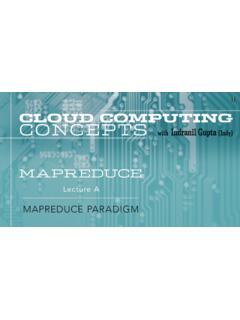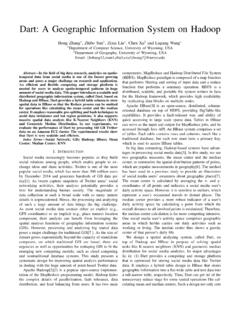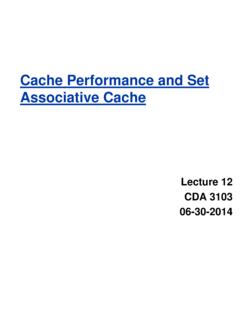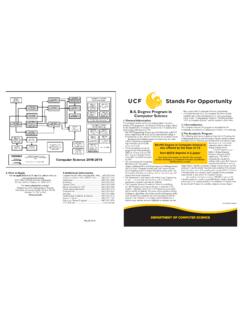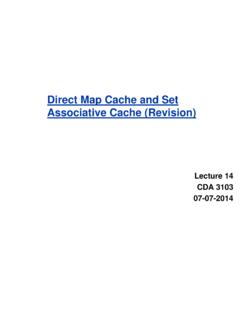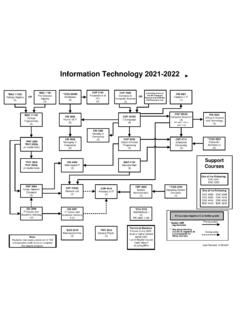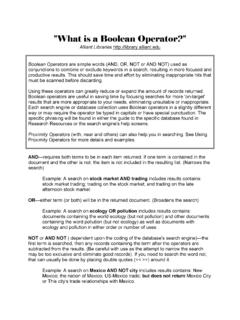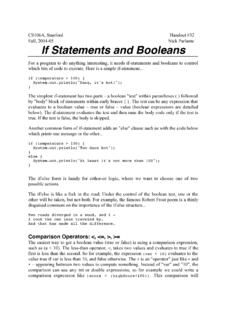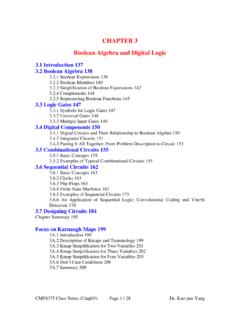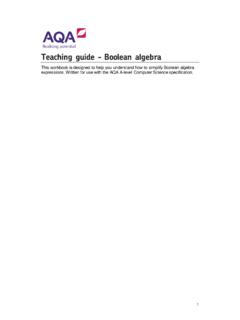Transcription of Fault Tree Analysis
1 Fault Tree Analysis Clifton A. Ericson II. 1 C. Ericson 1999. Fault Tree Analysis Clifton A. Ericson II. Sept. 2000. or 2 C. Ericson 1999. Fault Tree Analysis Outline n Overview n History n Basic Process n Definitions n Construction n Mathematics n Evaluation n Pitfalls n Rules n Examples 3 C. Ericson 1999. Fault Tree Analysis FTA Overview 4 C. Ericson 1999. Introduction To design systems that work correctly we often need to understand and correct how they can go wrong.. Dan Goldin, NASA Administrator, 2000. FTA identifies, models and evaluates the unique interrelationship of events leading to : Failure Undesired Events / States Unintended Events / States 5 C.
2 Ericson 1999. FTA - Description l Tool n evaluate complex systems n identify events that can cause an Undesired Event n safety, reliability, unavailability, accident investigation l Analysis n identifies root causes n deductive (general to the specific). n provides risk assessment F cut sets (qualitative). F probability (quantitative). 6 C. Ericson 1999. FTA - Description l Model A picture is worth a 1,000 words! n visual n displays cause-consequence relationships n Fault events, normal events, paths n probability l Methodology n defined, structured and rigorous n easy to learn, perform and follow n utilizes boolean Algebra, probability theory, reliability theory, logic n follows the laws of physics, chemistry and engineering 7 C.
3 Ericson 1999. Example FT. System Battery Light A B. System Undesired Event: Light Fails Off Light Fails FT Model Off Bulb Switch A Switch B Battery Wire Fails Fails Fails Open Fails Open Fails Open A B C D E. Cut Sets Event combinations that can cause Top Undesired Event to occur CS Probability A PA= B PB= C PC= D PD= E PE= 8 C. Ericson 1999. FTA Application Why l Root Cause Analysis n Identify all relevant events and conditions leading to Undesired Event n Determine parallel and sequential event combinations n Model diverse/complex event interrelationships involved l Risk Assessment n Calculate the probability of an Undesired Event (level of risk).
4 N Identify safety critical components/functions/phases n Measure effect of design changes l Design Safety Assessment n Demonstrate compliance with requirements n Shows where safety requirements are needed n Identify and evaluate potential design defects/weak links n Determine Common Mode failures 9 C. Ericson 1999. FTA -- Coverage l Failures l Fault Events l Normal Events l Environmental Effects l Systems, subsystems, and components l System Elements n hardware, software, human, instructions l Time n mission time, single phase, multi phase l Repair 10 C. Ericson 1999. FT Strengths l Visual model -- cause/effect relationships l Easy to learn, do and follow l Models complex system relationships in an understandable manner n Follows paths across system boundaries n Combines hardware, software, environment and human interaction l Probability model l Scientifically sound n boolean Algebra, Logic, Probability, Reliability n Physics, Chemistry and Engineering l Commercial software is available l FT's can provide value despite incomplete information l Proven Technique 11 C.
5 Ericson 1999. FTA Misconceptions l Not a Hazard Analysis n root cause Analysis vs. hazard Analysis n deductive vs. inductive l Not an FMEA. n FMEA is bottom up single thread Analysis l Not an Un-Reliability Analysis n System Integrity vs. Availability n not an inverse Success Tree l Not a model of all system failures n only includes those failures pertinent to the top Undesired Event l Not 100% fidelity model of reality only n estimate, not an exact duplicate n perception of reality 12 C. Ericson 1999. FTA Application -- When l Required by customer l Required for certification l Necessitated by the risk involved with the product (risk is high).
6 L Accident/incident/anomaly investigation l To make a detailed safety case for safety critical system l To evaluate corrective action or design options l Need to evaluate criticality, importance, probability and risk l Need to know root cause chain of events l To evaluate the effect of safety barriers l Determine best location for safety devices (weak links). 13 C. Ericson 1999. FTA Is Not For Every Hazard Haz1 3C. Haz2 2D. Haz3 1B FTA - Inadvertent Weapon Arm Haz4 2C. Haz5 3B.. Haz77 1C FTA - Inadvertent Weapon Launch .. Haz100 2C. Only do FTA on Safety Critical hazards. 14 C.
7 Ericson 1999. Example Applications l Evaluate inadvertent arming and release of a weapon l Calculate the probability of a nuclear power plant accident l Evaluate an industrial robot going astray l Calculate the probability of a nuclear power plant safety device being unavailable when needed l Evaluate inadvertent deployment of jet engine thrust reverser l Evaluate the accidental operation and crash of a railroad car l Evaluate spacecraft failure l Calculate the probability of a torpedo striking target vessel l Evaluate a chemical process and determine where to monitor the process and
8 Establish safety controls 15 C. Ericson 1999. FTA Timeline l Design Phase n FTA should start early in the program n The goal is to influence design early, before changes are too costly n Update the Analysis as the design progresses n Each FT update adds more detail to match design detail n Even an early, high level FT provides useful information l Operations Phase n FTA during operations for root cause Analysis n Find and solve problems (anomalies) in real time Conceptual Preliminary Final Deployment Design Design Design Initial Update Update Final Operations FTA FTA FTA FTA FTA.
9 16 C. Ericson 1999. FTA Summary Undesired Event B. System V x A C. V V. Fault Tree UE. Y. Critical Cut Set = A B C Y A C. Probability = x 10-7. B. 17 C. Ericson 1999. FTA Summary l FTA is an Analysis tool n Strengths methodical, structured, graphical, quantitative, easy to model complex systems n Coverage hardware, software, humans, procedures, timing n Like any tool, the user must know when, why and how to use it correctly l FTA is for system evaluation n Safety hazardous and catastrophic events n Reliability system unavailability n Performance unintended functions l FTA is for decision making n Root cause Analysis n Risk assessment n Design assessment 18 C.
10 Ericson 1999. FTA History 19 C. Ericson 1999. FTA Historical Stages The Beginning Years (1961 1970). l H. Watson of Bell Labs, along with A. Mearns, developed the technique for the Air Force for evaluation of the Minuteman Launch Control System, circa 1961. l Recognized by Dave Haasl of Boeing as a significant system safety Analysis tool (1963). l First major use when applied by Boeing on the entire Minuteman system for safety evaluation (1964 1967, 1968-1999). l The first technical papers on FTA were presented at the first System Safety Conference, held in Seattle, June 1965.
